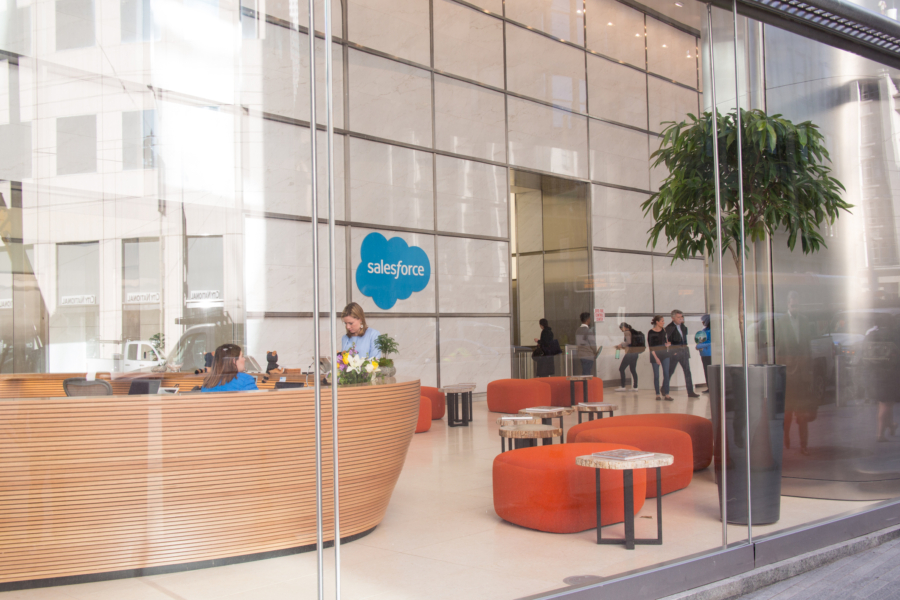
Salesforce contract management and CLM: What you need to know
Discover the key differences between Salesforce’s contract management features and a robust Contract Lifecycle Management (CLM) solution.

When you’re diving into the world of contract management software, Salesforce is a name that pops up a lot—and for good reason.
Ranked #1 by IDC’s April 2024 Software Tracker, Salesforce is a powerhouse Customer Relationship Management (CRM) system that many companies rely on for streamlined business processes. But when it comes to efficient contracting, there’s a big difference between integrating and implementing a proper Contract Lifecycle Management (CLM) and just using Salesforce’s in-app contract management features.
The Salesforce contract conundrum
Salesforce’s contract management tools don’t make it to the Gartner Magic Quadrant for Contract Lifecycle Management, PC Mag’s top 10 CLM software list, or Capterra’s celebrated reviews. Why? Because industry-leading CLM software is designed to ensure compliance, speed up approval cycles, and expand contract visibility—areas where CRMs just can’t compete.
CRM is fantastic for streamlining processes across sales, marketing, customer service, and e-commerce because it keeps customers at the center. But to maintain operations and satisfy customer demand, companies need complex workflows and internal processes that focus on other areas too. Contract risk, legal compliance, and supplier relations won’t get the visibility they need unless contracts are properly managed.
If you’re looking for basic Salesforce contract management functionalities, you may be in luck. But if you need something more robust that leverages automation and is customized to your unique business needs without extra costs, you need to look beyond a CRM. Think about it: a customized CLM solution can decrease revenue leakage, boost compliance, improve information sharing, and speed up procurement processes — likely all at a fraction of the cost.
What sales professionals need from CLM
When choosing a Contract Lifecycle Management (CLM) platform to integrate with your existing CRM, here are some key points to keep in mind:
- Real-time data mapping: Ensure your CLM provider supports real-time data mapping. This feature is essential for seamless integration.
- CPQ integration: Check how well your Configure, Price, Quote (CPQ) software integrates with the CLM platform. This is crucial for a smooth workflow.
- Salesforce compatibility: If you’re using Salesforce CPQ, verify its compatibility with your existing software. This will help avoid any integration issues.
- Future-proofing: Consider how the CLM solution will work with software you might add in the future. This is important for scaling your team’s operations.
As with all new solutions, it is important to determine whether Salesforce CPQ can be integrated with the other software that you have in place. A robust CLM platform should have ample integration capabilities. For example, Agiloft’s Integration Hub integrates with more than 1,000 integrations with well-known applications such as Slack, Teams, and Workday. The first of its kind to be embedded within a CLM platform, Integration Hubs allows data to flow into other areas of the business structure where it is deemed useful and removes the friction of sourcing and onboarding a new platform among many other use cases.
How CLM software helps shorten the sales cycle
CLM solutions that integrate seamlessly with other software, such as Salesforce, enable businesses to further automate their contract processes and negotiate deals in a fraction of the time it would normally take.
Here are five ways Salesforce for contract management is benefitted by an integrated CLM system:
- Pre-approved templates to cut down on manual contract work: Establish pre-approved contract templates using historical data and new legal insights. This means accurate, standardized agreements that minimize variability and reduce risks, helping your sales team close deals faster and providing a smooth contracting experience for customers.
- Quick answers with a centralized command center: Streamline document workflows with a centralized command center. Check document status anytime, anywhere with cloud capabilities. Efficient review and approval workflows ensure each step is managed smoothly, pushing contracts to Salesforce for real-time access.
- A centralized communication hub to keep things moving: A centralized communication hub shows the lifecycle of contracts, while an activity dashboard offers data points and contract analysis. This transparency helps forecast deal closures and identify hurdles, allowing your team to engage the best strategic partners to move the process along.
- Integrated system intelligence for smarter business strategy: Ensure your CRM speaks to your contract management system. With CLM for sales, each step within Salesforce is complemented by Agiloft CLM.
- Automated notifications for expedited supplier onboarding: A top-rated CLM platform can speed up supplier onboarding by giving suppliers limited access to the system. They get prompts for required documents, updates on contract approvals, and alerts on performance—all through automated notifications. If you’re just using Salesforce contract management tools, you’re likely missing out on these features.
The bottom line
In short, if you want to maximize efficiency with the world’s leading CRM, you need a top-tier CLM solution. Agiloft’s CLM platform, integrated with Salesforce, offers the customization and automation you need to take your business to the next level. Then, you can sit back and let your sales team focus on what matters: client engagement and boosting revenue.
Learn how Health Catalyst integrated Agiloft CLM with Salesforce to break the Sales bottleneck. Read the case study now.
Recent
Posts
From risk analysis to negotiation, contract managers unlock value in every agreement, fueling smarter business decisions.
Simplify contracting with Agiloft's core capabilities and discover the power of e-signature, automation, integration, and reporting.
Discover how contract management leaders can leverage agentic AI to solve challenging problems and deliver substantial value.





